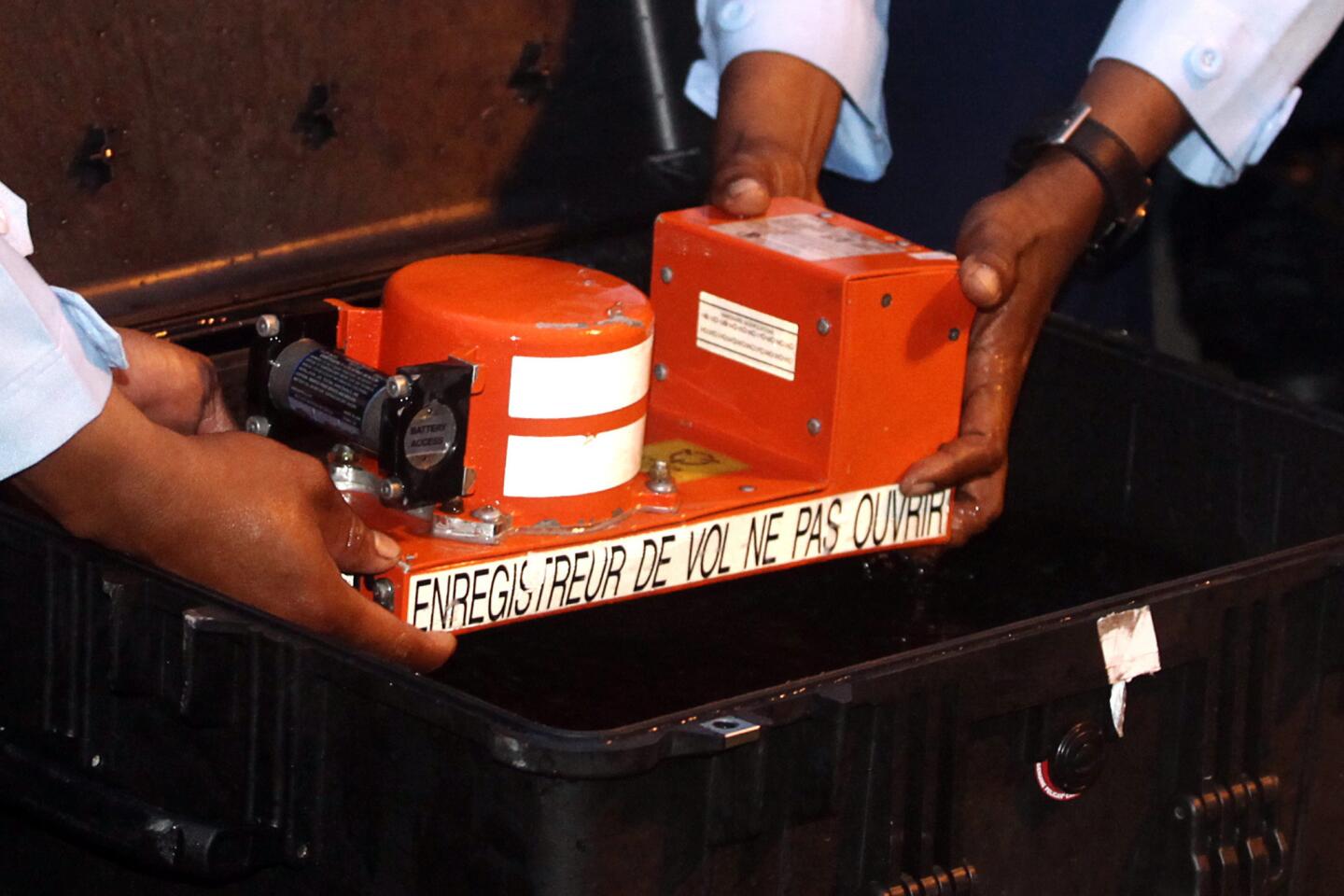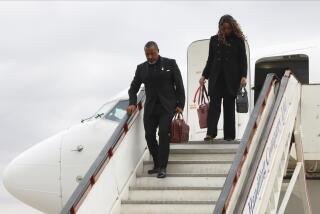More bodies, debris found, but ‘zero visibility’ halts AirAsia search
- Share via
SURABAYA, Indonesia — Search officials halted efforts to reach the submerged body of the crashed AirAsia jet on Sunday after divers faced low visibility in the murky Java Sea.
One week after the airliner went down en route from Surabaya, Indonesia, to Singapore, recovery crews have located several large objects on the sea floor that are believed to be the fuselage of the Airbus A320-200. The flight ran into a thunderstorm but the exact cause of the crash won’t be known until the “black box” flight recorders can be retrieved from the wreckage.
Officials earlier Sunday sent 21 Indonesian navy divers equipped with cameras and sonar beacons into the water with the aim of reaching the largest object, which geological survey vessels had measured at about 60 feet long.
“But visibility on the sea floor was zero, and it was covered with mud,” Bambang Soelistyo, head of Indonesia’s National Search and Rescue Agency, told reporters. “So the effort was suspended.”
Officials tried again to deploy a remotely operated underwater vehicle to pinpoint the wreckage in roughly 100-foot waters. But stormy conditions wreaked havoc with the effort as they have for the past eight days, officials said.
“Weather remains a challenge, but there’s hope for tomorrow,” Bambang told an evening news conference.
Four more bodies were found, bringing the confirmed death toll to 34, he said. A total of 162 mostly Indonesian passengers and crew were aboard, and all are presumed dead, many believed still to be strapped into their seats in the body of the plane on the sea floor.
Indonesian Brig. Gen. Arthur Tampi, the head of the national police medical department, said as days passed it was becoming more difficult to identify victims without DNA samples from families.
“The bodies are in a state of advanced decomposition,” Tampi said. “It’s impossible to identify them visually.”
Authorities in Surabaya have identified nine of the bodies, and experts from South Korea and Australia were due to arrive Monday to help identify the others, according to a statement from AirAsia .
Teams also located a fifth large object, about 32 feet long, lying close to the others, suggesting that the body of the aircraft could be relatively intact under water and did not break up during the thunderstorm.
More stray items from the airline were recovered by crews, AirAsia said, including the emergency exit window, luggage and passenger seats. Part of the aircraft’s emergency stairs also has been found, leading some experts to speculate that the pilot could have attempted a water landing.
Two U.S. naval ships and two helicopters were participating in an effort involving 27 vessels and 20 aircraft from at least seven countries, officials said.
Special correspondent Pathoni reported from Jakarta, staff writer Bengali from Mumbai, India.
More to Read
Sign up for Essential California
The most important California stories and recommendations in your inbox every morning.
You may occasionally receive promotional content from the Los Angeles Times.














